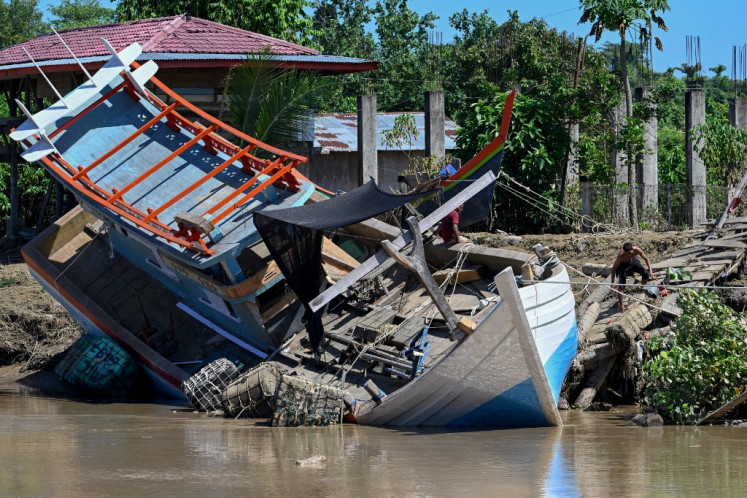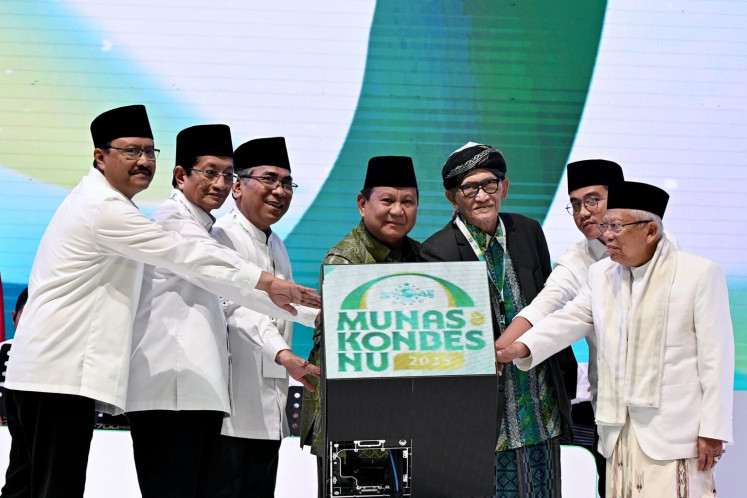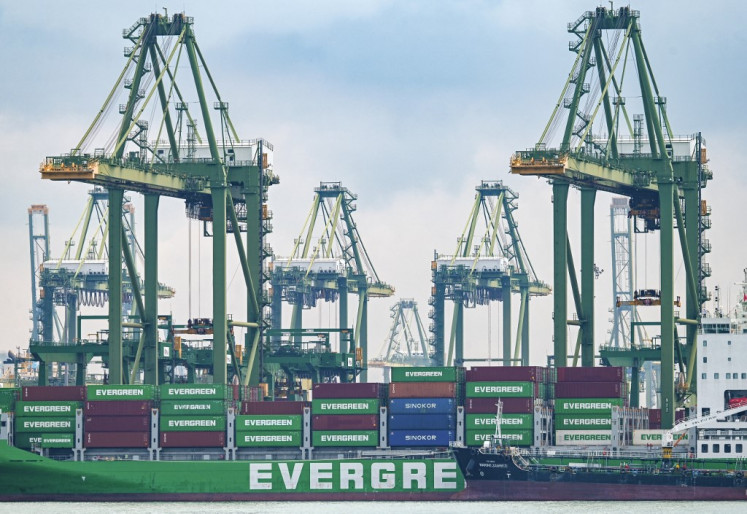Popular Reads
Top Results
Can't find what you're looking for?
View all search resultsPopular Reads
Top Results
Can't find what you're looking for?
View all search resultsMany unanswered questions over crash
A number of irregularities may have contributed to the crash of the Russian Sukhoi Superjet 100 airliner on Mt
Change text size
Gift Premium Articles
to Anyone
A
number of irregularities may have contributed to the crash of the Russian Sukhoi Superjet 100 airliner on Mt. Salak in West Java on Wednesday.
The airplane was declared missing on Wednesday after disappearing from radar screens at 2:33 p.m. Jakarta time. The pilot had requested clearance to descend from 10,000 feet to 6,000 feet at 2:21 p.m.
An Air Force helicopter located the crash site at 9:15 a.m. on Thursday on the slopes of Mt. Salak, at about 5,800 feet above sea level. The crash site is near the aircraft’s last known position.
The National Transportation Safety Committee (KNKT) chief Tatang Kurniadi said the airplane had smashed into the land mass.
“It looks like a controlled flight into terrain [CFIT] at 5,800 feet, which is very high, with an incline of 85 degrees,” he said.
CFIT refers to an airworthy airplane under the pilot’s control flying unintentionally into terrain, an obstacle or water, with the pilot usually unaware of the situation until it is too late.
Mt. Salak has been the site of other airplane accidents, including the crash of an Indonesian Air Force NC-212 in June 2008 that claimed 18 lives. Turbulence and unstable weather might have led to the accidents near or at the mountain.
A relative of one of the passengers on the ill-fated plane, Erwin Sofyan, 30, lamented the decision to fly over Mt. Salak. “I am a Bogor resident. I know the Mt. Salak area pretty well. It’s very difficult to evacuate victims if there is a plane crash in the area,” he said at the search and rescue post in Tenjolaya district in Bogor.
“Why did they fly over Mt. Salak? It is not a popular route to test an airplane — many airplanes have crashed in the area,” he added.
Erwin’s cousin, Insan Kamil Jatnika, 43, an employee with PT Indo Asia, was one of the 45 people on board the plane.
Another irregularity was noted by Ronny Rosnadi, a pilot with over 33,000 flying hours. He said the Russian aviators, captain pilot Aleksandr Yablontsev and co-pilot Aleksandr Kochetkov, violated height clearance requirements set for airplanes flying near obstacles like buildings, towers or mountains.
“I can’t help but wonder why the pilot asked to descend to 6,000 feet? That’s a violation of the minimum obstacle clearance altitude [MOCA], which is around 11,000 feet,” he said. “I believe the accident was caused by human error.”
MOCA is a system designed to inform pilots of the minimum altitude the aircraft must maintain within a certain radius of a specific location.
The Superjet was reportedly equipped with other advanced warning features including Minimum Off Route Altitude (MORA), and Tactical Airborne Warning System (TAWS) with the new version of Ground Proximity Warning System (GPW).
“Maybe the pilot’s vision was obscured by a thick fog that prevented him from seeing anything ahead of him,” Rosnadi said. However, he felt that it was unlikely that weather was the main cause of the crash as many airplanes had used that route before.
Observers also questioned why the airplane’s emergency locator transmitter (ELT) did not activate upon impact. Had it done so, rescue workers could have located the crash site much faster.
Search efforts were halted on Thursday evening after thick fog prevented rescuers reaching the crash site. Searching will continue early on Friday morning.
The government is considering a full evaluation of the safety audit certification process for all Sukhoi Superjet 100 aircraft bought by Indonesian companies to prevent another crash, a senior official said.
“We can trace the safety audit certification to the factory in Russia and we will compare their certification to ours,” air transportation director general Herry Bhakti Gumay said. He said the ministry would speak with operators whether they needed government assistance to ensure safety.
The airliner was on a “road show” to several Central and Southeast Asian countries to introduce the aircraft by conducting demonstration flights. It was the first Russian passenger aircraft certified by the European Aviation Safety Agency on Feb. 3. It was certified by the Russian Interstate Aviation Committee Aviation Register in 2011.
President Vladimir Putin was scheduled to call President Susilo Bambang Yudhoyono to convey his condolences on Thursday evening. Meanwhile, RIA Novosti reported that Russian Prime Minister Dmitry Medvedev has established a commission to investigate the accident. (nfo)










